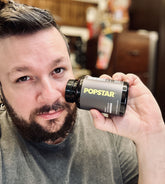Rough sex is a form of intimate activity characterized by heightened intensity, stronger physical sensations, and occasionally more vigorous engagement than traditional intercourse. While it can be an appealing and exciting option for individuals seeking a different sensory experience, rough sex also comes with unique considerations that underscore the importance of safety, communication, and mutual consent. In men’s health discussions, rough sex can be explored as a valid preference when approached responsibly, thereby helping partners discover new aspects of pleasure, intimacy, and connection. By understanding its benefits, potential risks, and best practices, men and their partners can engage in this style of intimacy in a healthier, safer way.
Table of Contents
- Definition of Rough Sex
- Benefits and Considerations
- Consent and Communication
- How to Prepare Properly
- Potential Physical and Emotional Risks
- Recovery and Aftercare
- Frequently Asked Questions
- Conclusion
Definition of Rough Sex
Rough sex refers to sexual encounters that intentionally involve intense physical stimulation, forceful or rapid thrusting, firm gripping, playful aggression, or other forms of high-energy contact. Though the terminology may evoke images of extreme behaviors, rough sex actually spans a broad continuum—from slightly more forceful touches and firmer grasps to role-play scenarios that incorporate elements of BDSM and kink. In many cases, “rough” simply means a heightened dynamic compared to usual lovemaking, with an emphasis on consensual power exchange or escalating arousal.
Key components that often come into play with rough sex include verbal and nonverbal cues, increased sensual pressure, the potential use of safe words, and frequent check-ins between partners to ensure that boundaries and comfort levels have not been surpassed. The exact nature of rough sex is personal, shaped by one’s fantasies, preferences, and comfort levels. Some enjoy playful biting, hair-pulling, or spanking, while others engage with more elaborate scenarios that might involve bondage or role reversal.
In a men’s health context, discussions around rough sex often address how it can increase pleasure sensation, create deeper intimacy through vulnerability and trust, and foster psychological release. However, approaching rough sex without mutual agreement or the proper groundwork can increase the likelihood of emotional distress, physical harm, and misunderstandings. As such, defining rough sex is just the start; recognizing the role of informed consent, negotiation, and precaution is vital for a fulfilling and safe experience.
Benefits and Considerations
Rough sex can be a multifaceted experience. Some couples find it exhilarating, noting that the heightened adrenaline rush and strong sensory input can lead to intense pleasure and memorable climaxes. Others appreciate the emotional depth that comes from sharing vulnerable fantasies or playing with dominant and submissive roles—a dynamic that can foster closeness and trust. However, it’s important to note that the benefits of rough sex are closely linked to proper understanding and reciprocated decision-making.
- Increased Arousal: The excitatory nature of rough sex can promote an intense rush of endorphins and adrenaline, heightening arousal for both partners.
- Psychological Release: For many, this style of intimacy can serve as a powerful outlet for stress, anger, or pent-up emotions when channeled consensually in a safe environment.
- Exploration of Desire: Rough sex encourages exploration of new sensations, positions, and power dynamics, offering a chance to discover previously unknown preferences or boundaries.
- Deepened Emotional Connection: Sharing fantasies or vulnerabilities can promote a bonding experience, especially if partners openly communicate about each step.
While these potential benefits can enhance men’s sexual wellness, the presence of a safe environment and open communication cannot be overstated. In the absence of clarity and mutual respect, rough sex might carry greater risk of unintended harm—physically or psychologically. Moreover, individuals from certain health backgrounds, or those prone to anxiety, may need extra precautions or professional advice before venturing into intense sexual dynamics. Ultimately, it’s crucial for partners to balance spontaneity with responsibility, factoring in personal well-being and emotional safety.
Consent and Communication
Consent and communication are cornerstones of healthy intimacy—and this truth becomes even more critical in scenarios involving rough sex. The unique physical and psychological intensity of rough sex demands that participants remain vigilant about their partner’s comfort, pain threshold, and emotional well-being at all times. Having a clear system for “checking in” can help partners ensure that everything happening aligns with mutual boundaries.
Here are some considerations when it comes to effective communication in rough sex:
- Open Dialogue: Before trying anything involving forceful contact, discuss what each partner is willing to try, which body parts are off-limits, and any health considerations. This conversation should be explicit, with no assumptions made.
- Safe Words: Many who experiment with rough sex use safe words—commonly “red” or “yellow”—to indicate an immediate need to stop or slow down. These words clarify boundaries when normal communication might be blurred by heightened arousal.
- Clear Nonverbal Cues: Sometimes, moans, pushing away, or changes in breathing can signal physical discomfort or emotional distress. Partners should remain attentive to each other’s bodies and emotional states during the encounter.
- After-Talk: Once the experience ends, partners can benefit from a debrief. This conversation allows both parties to share what they enjoyed, what might need adjustment, and whether any boundaries were tested or exceeded.
Consent, in any sexual activity, must be explicit, enthusiastic, and ongoing. If at any point someone withdraws their consent or grows unsure, the activity should pause or stop until the concern is addressed. This principle maintains physical safety and emotional trust, ensuring that rough sex remains a positive, consensual experience that can enhance overall sexual wellness.
How to Prepare Properly
Engaging in rough sex often requires more planning and communication than other forms of intimacy. This level of preparation allows for a smoother experience and reduces the risk of injury. Here are some strategies men and their partners might find useful prior to a rough sex session:
- Assess Comfort Levels: Make sure both (or all) participants are fully comfortable with escalating the intensity. This first step might involve a candid talk about personal needs, likes, and potential fears. If you sense uncertainty, consider waiting until your partner feels more informed or enthusiastic.
- Establish Boundaries: Everyone has unique triggers and limits, particularly when it comes to pain, pressure, or sexual scenarios that evoke past trauma. Creating a brief checklist of yes/no activities helps clarify physical, mental, and emotional limits ahead of time.
- Plan Logistics: You may need a private space with ample room to move, especially if you plan to be physically active or try certain positions. Clear away sharp corners or breakable objects. Having water, lubricant, or sexual health items (such as condoms) readily available is another fundamental aspect of preparation.
- Agree on Safe Words: A safe word system allows defining “pause” or “stop” points during the act. For example, “yellow” could mean slower or gentler, while “red” necessitates halting everything immediately.
- Check Protective Measures: Men, along with any partner, should ensure STI protection, particularly when exploring forms of contact that may lead to micro-tears or heightened exposure risk. Condoms, dental dams, or other protective methods remain crucial, no matter the sexual style.
By thoroughly preparing—both psychologically and physically—you and your partner can more comfortably navigate the energy, excitement, and novelty that rough sex brings. Proper planning ultimately fosters a sense of security and sets a foundation for positive, consensual exploration.
Potential Physical and Emotional Risks
While rough sex can be exhilarating, it undeniably carries a set of considerations and challenges, especially for men who may experience issues like performance anxiety, prior injuries, or uncertain boundaries. Physical and emotional harms can occur if the activity is not handled responsibly. Understanding these potential risks is essential to mitigate them and ensure a mutually satisfying experience:
- Physical Injuries: Bruising, strained muscles, or minor cuts can happen more easily when couples engage in forceful movements, playful choking, or spanking. Moreover, vigorous friction can lead to chafing—inadequate lubrication may aggravate this risk.
- Unintended Pain: Even when consenting to roughness, partners have different pain thresholds. Sudden or overly intense force can trigger lasting discomfort or emotional fallout. Men who have had surgeries or injuries related to the pelvic region, hips, or back should be especially cautious.
- Emotional Distress: Rough sex can stir challenging feelings, including shame, fear, or confusion. If you have a history of trauma or mental health concerns, intense power dynamics might exacerbate underlying issues.
- Communication Breakdown: In the heat of the moment, ignoring verbal or nonverbal cues can cause one partner to feel overpowered or violated, damaging the trust essential for healthy intimacy.
- Relationship Strain: Unaddressed miscommunications about boundaries, pleasure, or consent can lead to resentment or longer-term relationship problems. Frequent post-encounter check-ins can help reduce these risks.
By acknowledging the possibility of harm, couples can approach rough sex with heightened caution. It’s crucial to remain mindful of personal triggers and physical endurance limits. Should any injury or psychological discomfort persist after the activity, it might be wise to consult with a healthcare provider or therapist.
Recovery and Aftercare
Aftercare refers to how partners support each other once a rough sex session has ended. Whether you just shared a few moments of elevated passion or spent hours creating elaborate power-play scenarios, aftercare is crucial for mental, emotional, and physical well-being. Although frequently discussed in the context of BDSM communities, aftercare is equally beneficial for any type of intense or physically demanding intimacy.
Here are strategies to promote a safe, supportive aftercare routine:
- Physical Soothing: Apply soothing creams or lotions if there’s any abrasions or redness. If you’re into spanking or have engaged in teeth impressions, gently rub or ice the area to minimize discomfort.
- Emotional Decompression: Engage in gentle conversation, share loving or supportive words, and check in about each other’s emotions. This is especially important if any intense power dynamics were involved, as returning to an everyday emotional state may take time.
- Rehydration and Rest: Drinking water after an energetic session helps combat fatigue. Sleep, or at least lying down in a calm space, can also make a significant difference in how quickly the body recovers.
- Debriefing the Experience: Take time to share feedback. Discuss what went well, what might be adjusted, and whether anything felt concerning. Expressing gratitude or affection here can deepen your bond.
- Planning a Follow-Up: If either partner anticipates continued soreness or emotional vulnerability, scheduling a routine check-in the following day can maintain open dialogue and reassure all involved.
Men, in particular, may benefit from addressing any concerns about performance pressures or bodily discomfort in the aftermath of rough sex. Staying attentive to the body and mind’s signals fosters resilience and can ensure that subsequent experiences remain safe and satisfying.
Frequently Asked Questions
Can rough sex be part of a healthy relationship?
Yes, rough sex can be a healthy component of a relationship as long as it is fully consensual, safely executed, and grounded in open communication. Both partners should have the freedom to request changes or stop at any time without feeling judged or pressured. It’s also important to remember that “healthy” is subjective and can differ greatly between couples; what feels comfortable and enjoyable to some might be uncomfortable to others. Ensuring that you and your partner are on the same page regarding comfort and boundaries is essential.
Does rough sex cause serious injuries?
While minor bruising, soreness, or friction burns may occur, serious injuries are relatively rare if partners heed important safety measures. These include using lubrication to prevent excessive friction, communicating openly during the act, and closely monitoring each other’s physical signals. When rough sex is approached with intention and preparation, it can be both safe and pleasurable. However, if you notice concerning pain or injuries after an encounter, it’s recommended to consult a medical professional.
Are there risk factors for men when engaging in rough sex?
Some men may be more prone to injuries if they have pre-existing conditions such as joint problems, back issues, or circulatory difficulties. An extended or forceful position might exacerbate these conditions. Men who experience high blood pressure should also be cautious if activities like choking or breath play are involved, as these can raise cardiovascular risks. It is always advisable to discuss any health concerns with a trusted medical provider before exploring rough sex. Adjusting intensity or avoiding certain activities can help reduce risk.
How can I talk to my partner about trying rough sex?
The best way to address the topic is through calm, honest, and non-judgmental conversation. You might start by sharing your curiosity or explaining why this style of intimacy appeals to you. Ask for your partner’s perspective, ensuring that they feel comfortable expressing concerns or hesitations. Use explicit language to clarify which acts, positions, or sensations you’d like to explore. Emphasize that you respect their boundaries; reassure them that everything can be re-evaluated or changed. This open approach helps create an environment where everyone feels heard.
What if I feel guilty or ashamed after rough sex?
Feelings of guilt or shame can arise from societal taboos or internal myths that conflate rough sex with aggression or harm. Processing these emotions requires acknowledging that consenting adults can enjoy a variety of intimate dynamics, including more intense ones, without it being harmful. Consider discussing these feelings with your partner, a therapist, or a trusted health professional. Identifying the source of your guilt can help you reframe the experience as a consensual, pleasurable, and mutually empowering act.
Should I use a safe word even if I trust my partner?
Yes, a safe word is a practical tool for any couple—regardless of trust level—when adding elements of roughness into their sexual activities. Trust permits deeper exploration, but it doesn’t eliminate the possibility of miscommunication in the heat of the moment. A safe word ensures that if something becomes too intense, one can unambiguously halt or adjust the activity. It’s simply another layer of protection that supports ongoing and enthusiastic consent.
How does rough sex intersect with bondage or BDSM?
Rough sex may overlap with bondage or BDSM, but they are not synonymous. Bondage and BDSM involve power exchanges, specific role play, and sometimes the use of restraints or toys to enhance particular sensations. Rough sex can include certain BDSM elements like spanking or pinning someone down, yet neither always requires the other. The key is informed consent, ongoing communication, and the presence of trust and preparation. If you plan to include bondage or more formal BDSM practices, additional planning regarding safety and aftercare is highly recommended.
Can rough sex improve intimacy in a relationship?
In many cases, yes—especially when both partners are enthusiastic about exploring new sensations and emotional depths. Engaging in rough sex can strengthen trust by requiring deeper communication and vulnerability. Couples who find power-play and intense sensation fulfilling often report feeling more connected afterwards. However, such intimacy improvements hinge on mutual consent, respect for personal limits, and thorough post-encounter support. If rough sex is introduced unilaterally or without sufficient conversation, it can have the opposite effect and damage trust.
Is there an age limit or recommended range for experimenting with rough sex?
The ability to engage in rough sex safely is less about chronological age and more about overall health, self-awareness, and informed consent. That said, age-related factors such as decreased bone density, reduced muscle strength, or chronic health conditions may necessitate lower-intensity forms of roughness or additional precautions. If you have any concerns about your capacity for increased intensity, speak with a healthcare professional who is knowledgeable about sexual health and can provide personalized recommendations.
What should I do if rough sex brings up past trauma?
If engaging in rough sex triggers memories of a traumatic event, it’s important to pause and seek professional help. Trauma responses could manifest as panic attacks, emotional distress, or flashbacks, which are signals from your mind-body system that you need support. Consider talking to a therapist, counselor, or trauma-informed healthcare provider. Openly communicating with your partner about how certain activities make you feel can also help them be more supportive and avoid inadvertently reactivating those vulnerabilities.
Conclusion
Rough sex, when grounded in mutual respect and clear communication, can open doors to new experiences, deeper connections, and heightened pleasure. For men looking to explore beyond the usual confines of intimacy, this style can be both liberating and empowering—provided they take the time to learn about safety practices and the importance of explicit, ongoing consent. The key to healthy, satisfying rough sex lies in balancing your partner’s comfort, personal boundaries, and emotional readiness with your own desires. By consistently checking in with each other, embracing thorough aftercare, and remaining open to feedback, you can help ensure that rough sex remains a positive force in your overall sexual wellness journey.




















































